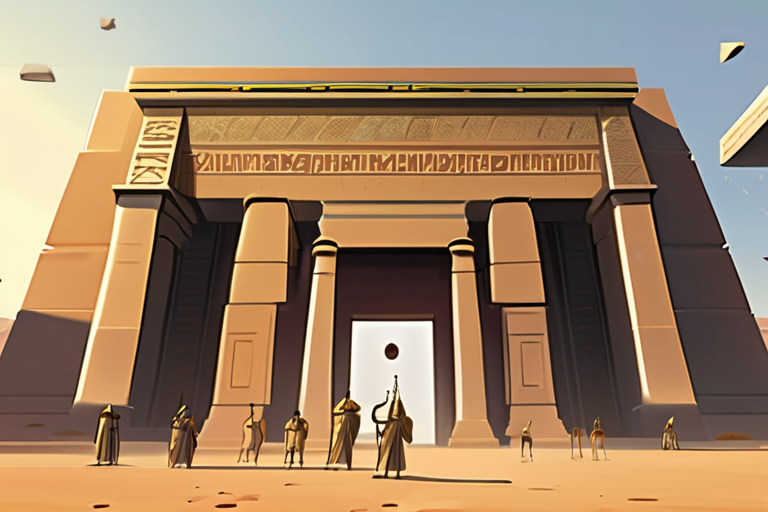3,000 Years of Secrets Hidden Beneath Egypt's Greatest Temple
A groundbreaking geoarchaeological study has shed new light on the ancient Egyptian temple complex of Karnak, revealing a 3,000-year history of transformation and hinting at a link to the creation myth. Researchers from the University of Southampton have conducted the most comprehensive survey of the temple's landscape, uncovering evidence that its placement may mirror the mythological story of land emerging from primeval waters.
The study, published on October 6, 2025, analyzed sediments and pottery fragments to reconstruct the temple's history. According to Dr. Sarah Jones, lead researcher, "Our findings suggest that Karnak Temple began as an island formed by ancient Nile channels, which later expanded into Egypt's grandest sanctuary." This discovery challenges previous assumptions about the temple's origins and highlights the complex relationship between human activity and environmental changes.
The temple's transformation from a small island to a vast sacred center is a testament to the ingenuity and adaptability of ancient Egyptians. As Dr. Jones explained, "By analyzing the sediment layers, we were able to track the temple's growth over time, revealing a dynamic process that reflects the changing needs and beliefs of its inhabitants." The study also suggests that the temple's placement may have been deliberately chosen to reflect the creation myth, with the island representing the primordial land emerging from the waters.
Karnak Temple has long been considered one of the most impressive architectural achievements in ancient Egypt. Its sprawling complex, which includes numerous temples, sanctuaries, and obelisks, is a testament to the advanced engineering skills and artistic expression of the Egyptians. The temple's significance extends beyond its grandeur, however, as it also holds spiritual and cultural importance for the Egyptian people.
The study's findings have significant implications for our understanding of ancient Egyptian culture and society. As Dr. Jones noted, "This research highlights the intricate relationship between human activity, environmental changes, and cultural development." The discovery also underscores the importance of interdisciplinary approaches to archaeology, combining geological, archaeological, and historical perspectives to gain a more comprehensive understanding of the past.
The researchers are now planning to conduct further studies on other ancient Egyptian sites, building on the insights gained from this groundbreaking research. As Dr. Jones concluded, "We hope that our findings will inspire new generations of scholars and enthusiasts to explore the rich cultural heritage of Egypt."
Background:
Karnak Temple is one of the largest temple complexes in the world, covering an area of over 100 hectares. Its history spans over three millennia, with evidence of human activity dating back to around 2000 BCE. The temple's significance extends beyond its architectural grandeur, as it also holds spiritual and cultural importance for the Egyptian people.
Additional Perspectives:
Dr. Mark Lehner, a renowned Egyptologist at Harvard University, commented on the study's findings, "This research provides a fascinating glimpse into the complex history of Karnak Temple, highlighting the dynamic relationship between human activity and environmental changes." He added, "The discovery of a link to the creation myth is particularly intriguing, as it underscores the deep cultural significance of this site."
Current Status:
The study's findings have been published in a peer-reviewed journal and are available online. The researchers are now planning to conduct further studies on other ancient Egyptian sites, building on the insights gained from this groundbreaking research.
Next Developments:
As the researchers continue their work, they hope to shed more light on the cultural and historical significance of Karnak Temple. Future studies will focus on exploring the temple's relationship with its surrounding environment, as well as examining the impact of human activity on the site over time.
*Reporting by Sciencedaily.*



 Hoppi
Hoppi

 Hoppi
Hoppi

 Hoppi
Hoppi

 Hoppi
Hoppi

 Hoppi
Hoppi

 Hoppi
Hoppi











